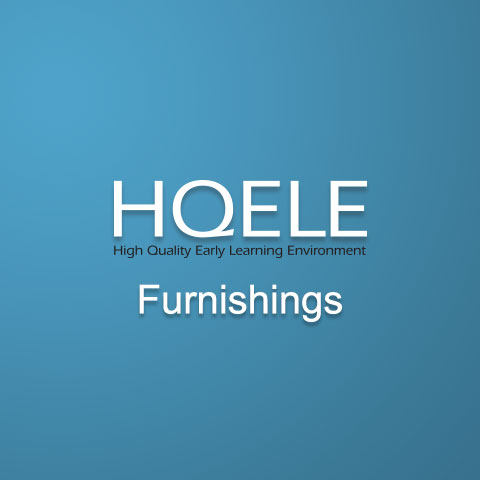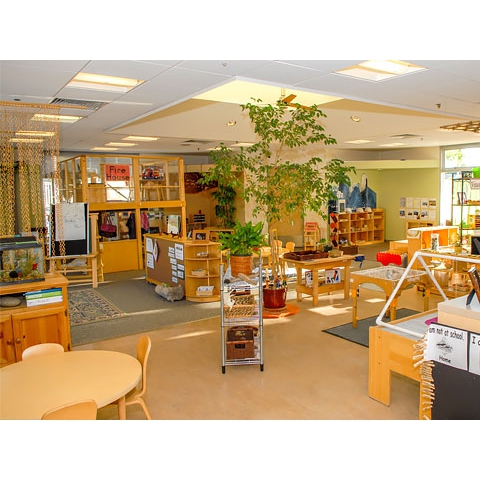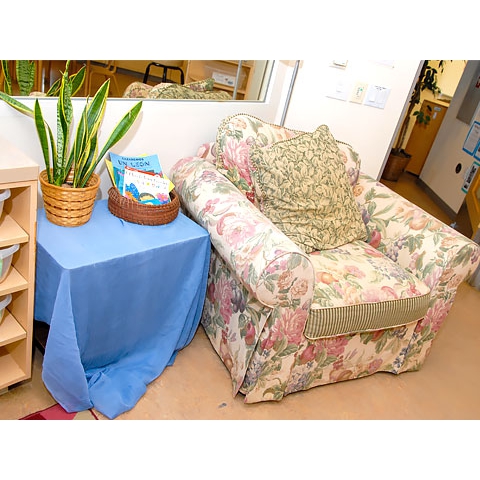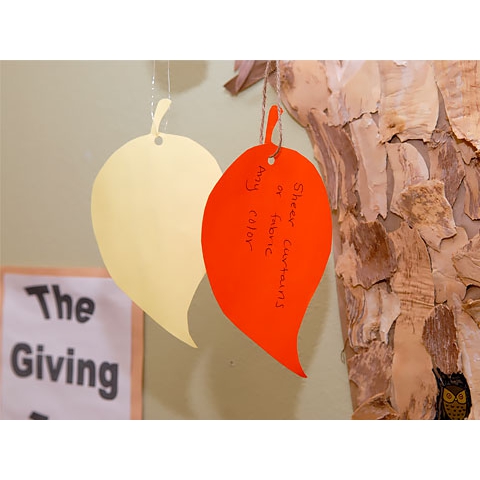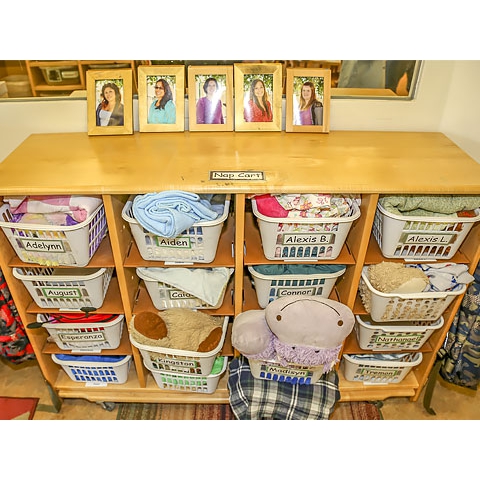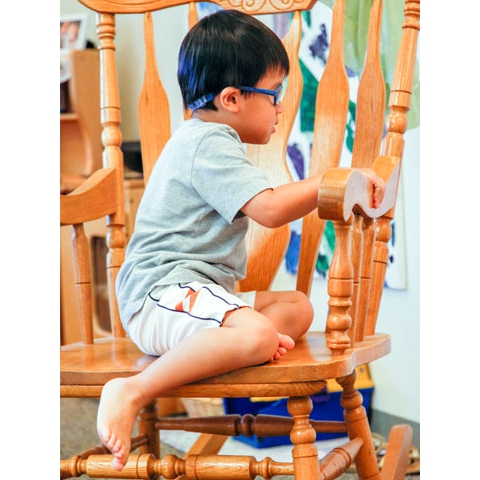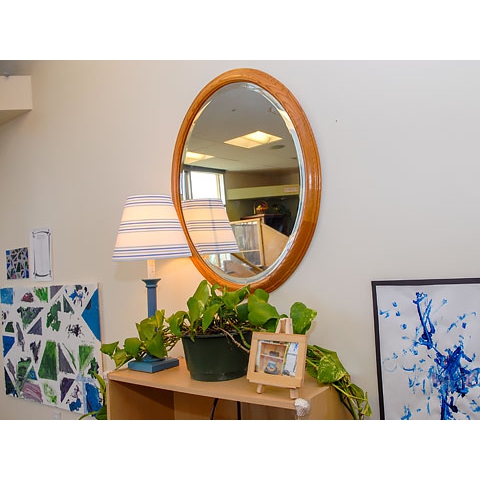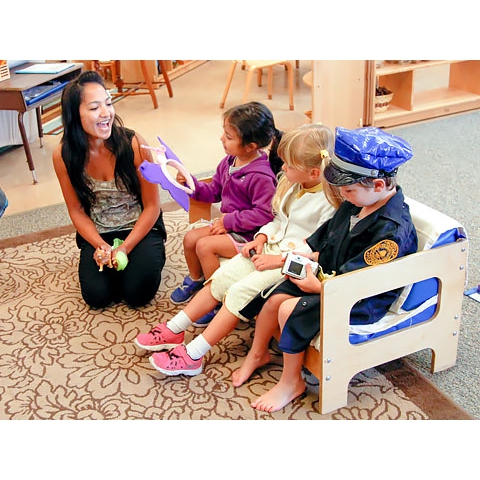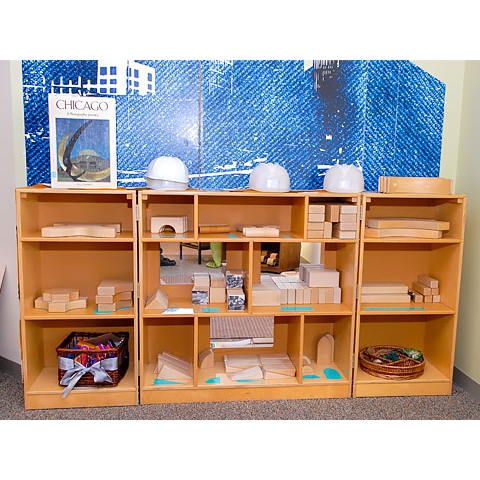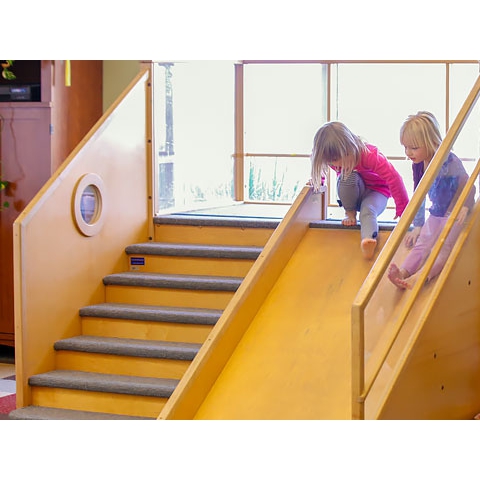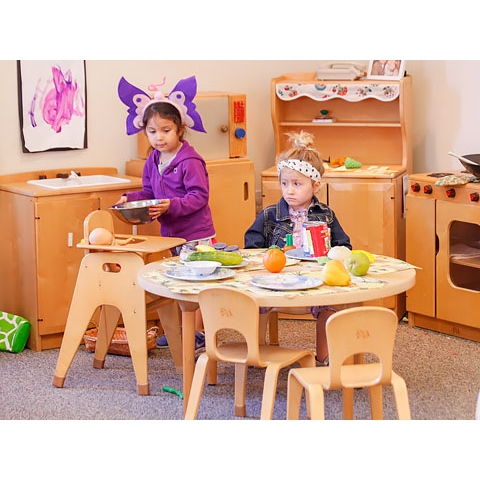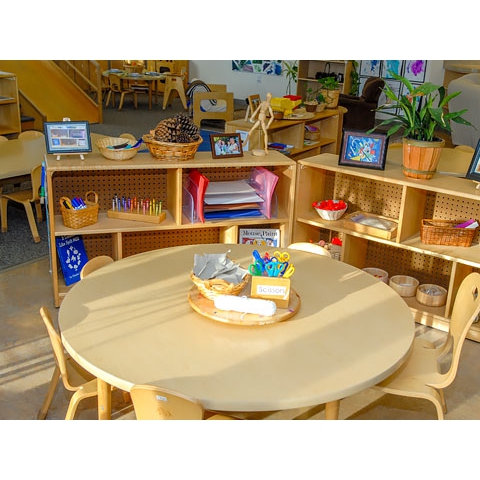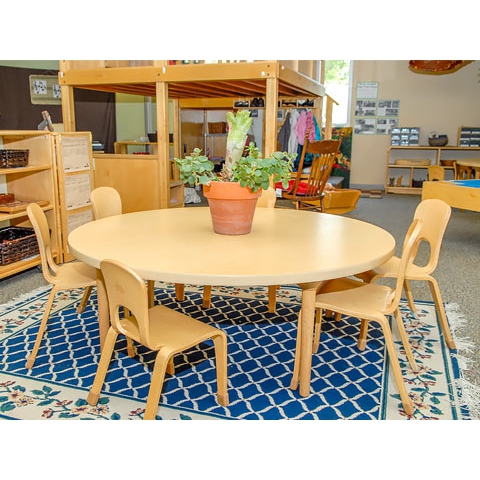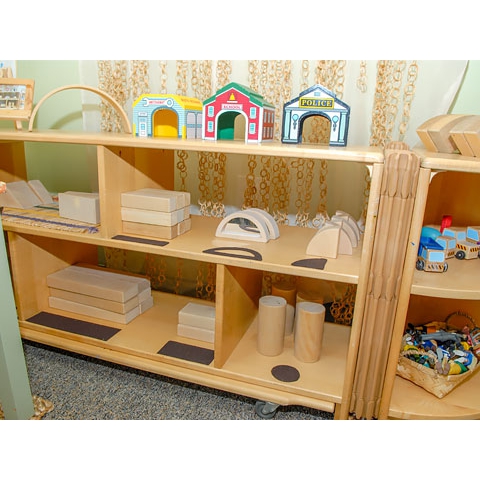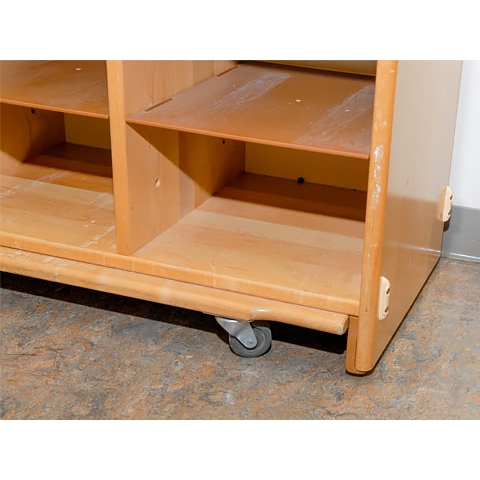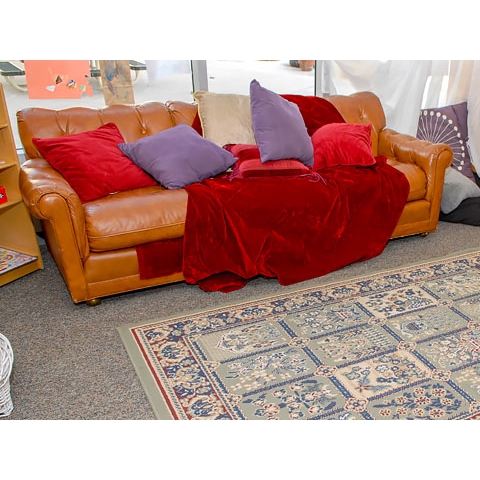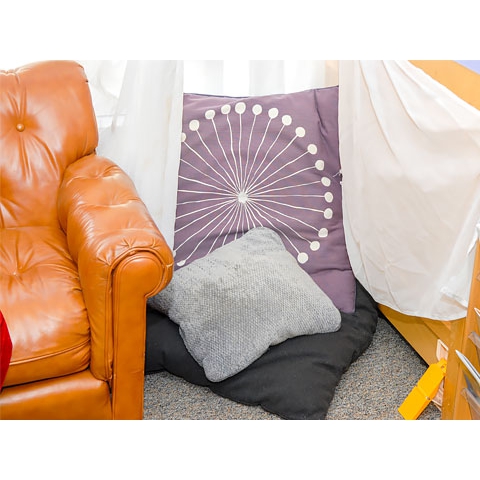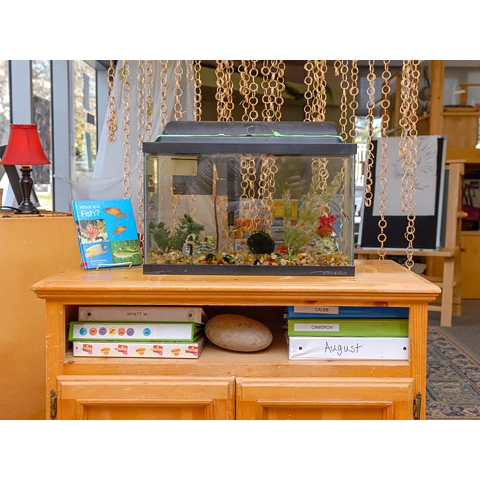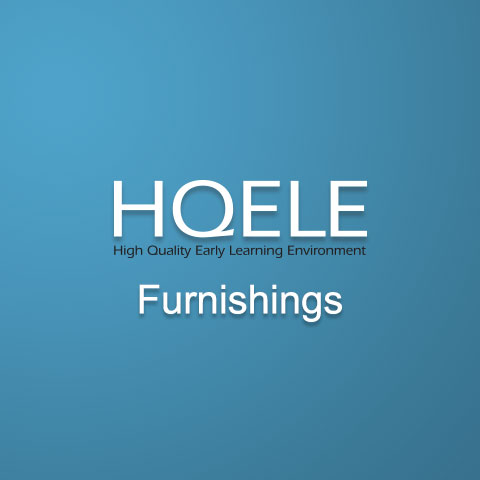HQELE Key Element: Furnishings
Furnishings: Durable wooden shelves, tables, chairs and dividers to define space and invite engagement across the content of our curriculum.
The furnishings in a classroom should reflect one’s image of the child ![]() (468k PDF) as well as the core values and beliefs educators bring to the teaching/learning process. The tables, chairs, shelves and related durable fixtures in the early childhood classroom “set the stage”
(468k PDF) as well as the core values and beliefs educators bring to the teaching/learning process. The tables, chairs, shelves and related durable fixtures in the early childhood classroom “set the stage” ![]() (2.9 MB PDF) for learning and provide a framework and road map for all that occurs within this context. Clearly defined activity areas help create a sense of order and predictability, support children’s interests and give direction to children’s efforts and activities. Utilizing durably constructed natural wood products conveys a high regard for children’s capabilities and offer an appreciation of the importance of the aesthetic aspects of the physical environment.
(2.9 MB PDF) for learning and provide a framework and road map for all that occurs within this context. Clearly defined activity areas help create a sense of order and predictability, support children’s interests and give direction to children’s efforts and activities. Utilizing durably constructed natural wood products conveys a high regard for children’s capabilities and offer an appreciation of the importance of the aesthetic aspects of the physical environment.
What is it you most like about your own home environment? Think about the physical spaces in which you feel most comfortable, the elements of those spaces that affect you in positive and productive ways. Likewise, consider the importance of aesthetics in the design of your classrooms… how does texture and light and color contribute to the sense of well-being and capability. Your classroom should “ground” both you and your children quite literally with furnishings that are safe, developmentally appropriate, durable, natural, warm and supportive. Classroom furnishings have a remarkable impact on learning.
The hot spots represented on the panoramic tour represent a sample of this particular Key Element. Explore the Video Clip in this section to learn more.
Slideshow*
Videos
- Furnishings Overview
Examples of using durable furnishings within a classroom to invite engagement across curriculum content. - Lighting within Classroom Spaces
Articles/Publications
- Universal Design for Learning in Early Childhood Environments
 (442k PDF)
(442k PDF) - Early Learning Environments That Work
by Rebecca Isbell & Betty Exelby - All About the ECERS-R
by Deb Cryer & Thelma Harms
- Mira Costa Preschool Environment Checklist
 (127k PDF)
(127k PDF)
A checklist based on the Early Childhood Environment Rating Scale
Websites
- Community Playthings – Resources for Classroom Design
- Community Playthings – Sample Classrooms
- The Power of Purposeful Preschool Environments
This article talks about four major elements to consider when creating an environment to increase learning.
Many strategies and elements included throughout this site are applicable to all students and their families. Additional information/resources related to students with disabilities and family engagement can be found within the HQELE Online Tool Overview and MiraCosta Child Development Center Overview
*These slideshow images are being used with explicit permission from MiraCosta College and their families for the sole purpose of the HQELE professional development online tool. All images remain the property of the California Department of Education, Special Education Division, SEEDS Project, A Special Project of the Sacramento County Office of Education and may not be published, exhibited, broadcast, posted on the Internet, sold, traded, shared, or used in any way not specified without the written permission of CDE- SEEDS Project.

